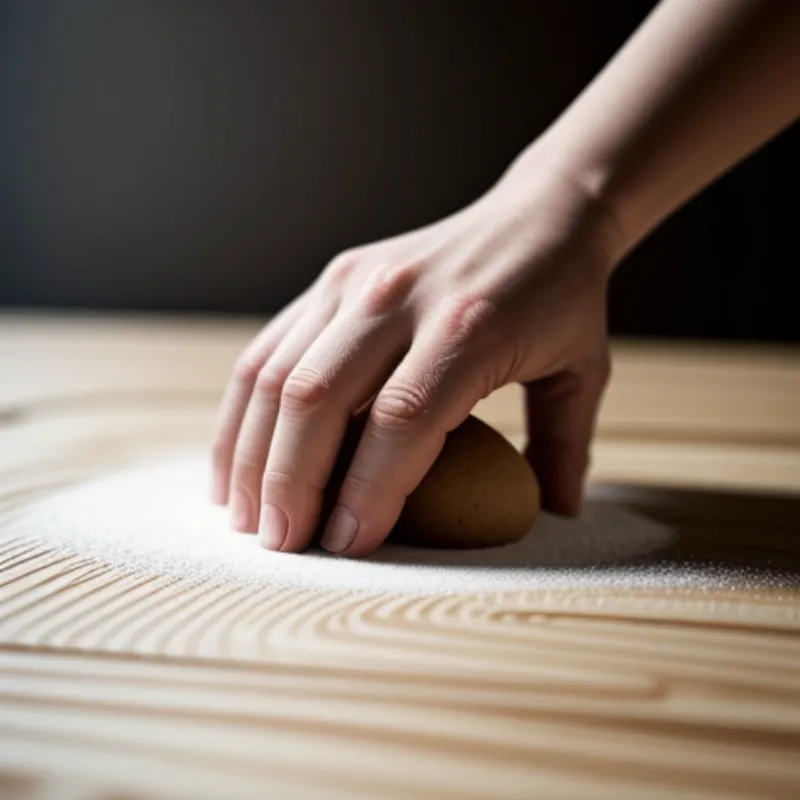Pastine, the heart and soul of Italian cuisine, evokes images of convivial family gatherings and delectable aromas wafting from the kitchen. While the thought of making pasta from scratch might seem daunting, I assure you, it’s a rewarding culinary adventure! With this easy-to-follow guide, you’ll master the art of making perfect pastine right in your own home. Get ready to impress your family and friends with your newfound pasta-making skills!
What is Pastine?
Pastine simply means “pasta” in Italian. It encompasses a wide array of shapes and sizes, each lending itself beautifully to different sauces and dishes. From the long and elegant strands of spaghetti to the delicate folds of tortellini, the possibilities are truly endless!
Why Make Homemade Pastine?
You might be wondering, why go through the effort of making pastine when you can easily buy dried pasta from the store? Well, let me tell you, the taste and texture of freshly made pastine are simply unparalleled! It’s softer, more delicate, and absorbs sauces more readily, resulting in a far superior culinary experience.
Plus, making pastine is a fun and engaging activity for the whole family. Imagine the smiles on your loved ones’ faces as they gather around, helping to knead the dough and shape the pasta. It’s an opportunity to create lasting memories while enjoying a delicious homemade meal.
Ingredients for Authentic Pastine
This simple recipe requires just a few basic ingredients:
- 2 cups (250g) all-purpose flour (or “00” flour for a finer texture), plus extra for dusting
- 3 large eggs, at room temperature
- 1 teaspoon olive oil (optional, for added elasticity)
- Pinch of salt
Tips for Ingredient Substitutions:
- Gluten-Free Pastine: For a gluten-free option, use a gluten-free all-purpose flour blend.
- Vegan Pastine: Replace the eggs with a flaxseed “egg” (1 tablespoon ground flaxseed mixed with 3 tablespoons water) per egg. Keep in mind that the texture will be slightly different.
Essential Tools for Pastine Making
- Large mixing bowl: To combine the ingredients and knead the dough.
- Fork: For initially mixing the flour and eggs.
- Clean work surface: To knead the dough.
- Rolling pin or pasta machine: To roll out the dough into thin sheets.
- Sharp knife or pasta cutter: To cut the pasta into your desired shapes.
Step-by-Step Guide to Making Pastine from Scratch
-
Make the Dough: In a large mixing bowl, combine the flour and salt. Create a well in the center and crack in the eggs. Use a fork to gently whisk the eggs, gradually incorporating the flour from the sides of the well. If using, add the olive oil.
-
Knead the Dough: Once the dough starts to come together, transfer it to a lightly floured surface. Knead the dough for 8-10 minutes, or until it becomes smooth and elastic. If the dough feels too sticky, add a little more flour, a tablespoon at a time. Conversely, if the dough feels dry, add a teaspoon of water at a time.
 kneading-pastine-dough
kneading-pastine-dough -
Rest the Dough: Form the dough into a ball, wrap it tightly in plastic wrap, and let it rest at room temperature for at least 30 minutes. This allows the gluten to relax, making the dough easier to roll out.
-
Roll Out the Dough: Divide the dough into four equal portions. Work with one portion at a time, keeping the rest covered to prevent drying. On a lightly floured surface, use a rolling pin or pasta machine to roll out the dough into thin sheets. Start at the thickest setting and gradually work your way down to the thinnest setting, dusting with flour as needed to prevent sticking.
 rolling-pastine-dough
rolling-pastine-dough -
Shape the Pastine: Now comes the fun part! Cut the rolled-out dough into your desired shapes. Use a sharp knife or pasta cutter to make fettuccine, tagliatelle, pappardelle, or any other shape you like. You can also use cookie cutters to create fun shapes for kids!
-
Cook the Pastine: Bring a large pot of salted water to a rolling boil. Add the fresh pastine and cook for 2-3 minutes, or until al dente (cooked through but still firm to the bite).
-
Serve and Enjoy: Drain the pastine and toss it with your favorite sauce. Serve immediately and savor the taste of your homemade creation!
Tips and Tricks for Perfect Pastine:
- Use fresh, high-quality eggs for the best flavor and color.
- Don’t be afraid to get your hands dirty! Kneading the dough is essential for developing the gluten.
- If using a pasta machine, pass the dough through each setting a couple of times to ensure even thinness.
- Dust the pasta sheets with flour as needed to prevent sticking.
- Fresh pasta cooks much faster than dried pasta, so keep an eye on it!
Conclusion
Making your own pastine is a labor of love, but the results are well worth the effort. With a little practice and these helpful tips, you’ll be a pastine-making pro in no time!
So, gather your ingredients, invite your family and friends, and embark on a delicious culinary adventure. Don’t forget to share your pasta creations and tag us on social media – we can’t wait to see what you come up with!
